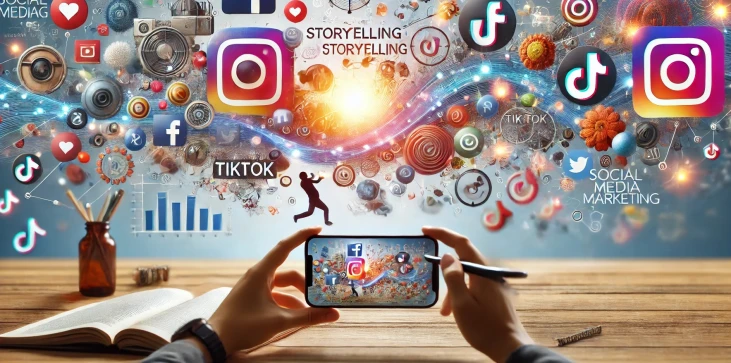
In today’s digital age, consumers are overwhelmed with content. From TikTok challenges to Instagram reels, brands are constantly competing for attention. Amidst this noise, storytelling emerges as a unique and engaging tool that can capture the audience’s interest on a deeper emotional level. Storytelling in social media marketing is not just about creating engaging content; it’s about forging lasting connections, building brand loyalty, and inspiring action. By incorporating authentic stories into marketing strategies, brands can create meaningful experiences that resonate with their audience. This article dives into the essential elements of storytelling in social media marketing and how to use this method to build stronger, more emotional connections with followers.
Visual platforms like Instagram and TikTok are ideal for storytelling, particularly through images and videos. Visual storytelling allows brands to convey messages quickly and effectively, often without the need for extensive text. On Instagram, tools like Stories, Reels, and IGTV offer various formats for sharing compelling narratives. TikTok’s short-video format pushes brands to be creative, delivering a story in as little as 15 to 60 seconds. Using strong visuals paired with a narrative hook can make your brand’s story stick in the minds of viewers.
Facebook, with its diverse user base, provides an excellent platform for long-form storytelling. Here, brands can share more detailed content, including customer testimonials, behind-the-scenes insights, or company milestones. Authenticity is key on Facebook. Audiences are more likely to engage with stories that feel real and personal rather than heavily curated content. Using Facebook’s features like Live videos and polls can also help create a more interactive storytelling experience that invites audience participation.
Storytelling in social media marketing is an art that, when executed well, can significantly enhance brand visibility and engagement. By understanding your audience, crafting emotionally resonant stories, and leveraging the unique features of each platform, you can build a loyal community around your brand. Whether it’s through visual narratives on Instagram and TikTok or in-depth stories on Facebook, storytelling can be the key to creating lasting, meaningful relationships with your audience.

Small businesses can use storytelling to humanize their brand and make it more relatable. By sharing personal anecdotes, customer stories, or the journey behind their products, small businesses can create a more intimate connection with their audience. Unlike large brands, small businesses can offer more personalized and unique stories, making them stand out in a competitive market.
User-generated content (UGC) is a powerful storytelling tool because it provides authentic testimonials from real customers. Brands can repurpose UGC to share success stories, reviews, or experiences, creating a more trustworthy and relatable narrative. UGC helps build credibility and strengthens the brand’s relationship with its community.
TikTok storytelling often revolves around short, punchy, and highly engaging videos, relying on trends, challenges, and viral content to drive interaction. Instagram storytelling, on the other hand, offers more versatility with its blend of images, videos, and longer captions, allowing brands to tell more detailed and layered stories through formats like Stories, Reels, and IGTV. Both platforms require creativity but cater to different types of content and engagement styles.